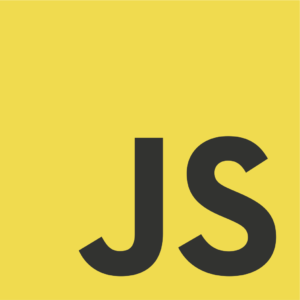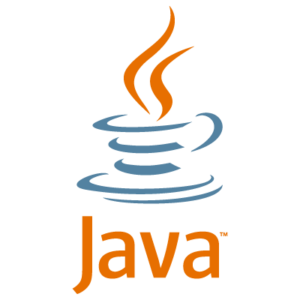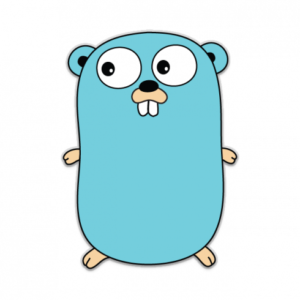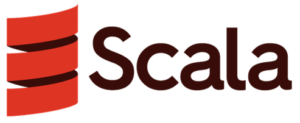List of Coding Languages
Coding languages are vocabulary and set of grammatical rules for instructing a computer system or computing device to perform specific tasks. Following are the some of coding languages used by the programmers.
- JavaScript

Ranked at first position, JavaScript is one of the most widespread programming languages nowadays. It is a popular, powerful, dynamic, scripting language that is used to create cool websites and games for the web. It derives much of its syntax from The C Language. JavaScript is compatible across all browsers, and is used in over 90 percent of all web pages. In recent years, JavaScript has also gained use as the foundation of Node.js, a server technology that among other things enables real-time communication. In 2016, compatibility and adoption of JavaScript 6 continued to grow and Progressive Web Apps became more usable, allowing offline-first functionality for web apps.
Example: –
/*script*/
document.getElementById("demo").innerHTML = "Hello JavaScript!";- Python
Python is a widely used high-level programming language used for general-purpose programming, as it is simple and readable. It is a versatile embedded scripting language, a solid foundation of many web frameworks, a preferred choice for automating tasks (including in 3D software applications), programming desktop tools, and performing data science and computation activities. Several libraries have been created for Python related to mathematics, physics and natural processing due to its use in the educational field. Python’s flexibility makes it possible to build applications for various operating systems, including Android. Tech giants like Google and Yahoo along with NASA, PBS, and Reddit use Python for their websites.
Microsoft launched the beta version 2.0 of its Cognitive Toolkit open source deep-learning framework in October 2016, which includes support for Python.
For ex.
# This program prints Hello, world!
print('Hello, world!')- Java

Java is one of the most popular, most adopted and general purpose programming language used by millions of developers and billions of devices around the world. It is a class-based, object-oriented language and designed to be portable, which means that you can find it on all platforms, operating systems, and devices. It is used to develop all kinds of Android apps, desktop apps, and video games. It is also commonly used as a server-side language for enterprise-level backend development. This programming language has long-term compatibility and developers are comfortable with Java.
For ex: –
public class HelloWorld {
public static void main(String[] args) {
// Prints "Hello, World" in the terminal window.
System.out.println("Hello, World");
}
}- Ruby
Ruby is a dynamic, reflective, object-oriented, and general-purpose programming language, which supports multiple programming paradigms including functional, object-oriented, and imperative.
Back in May 2016, the Ruby programming language featured in the top 10 and is still a preferred tool of choice for many start-ups, developers and established businesses. While Ruby has largely improved the framework (Ruby on Rails) and has brought agility and modular approach for developing new applications, the rise of Node.js was a reason for the disperse of new generation developers among competitive communities.
For Example: –
puts 'Hello, world!'
- PHP
PHP (Hypertext Pre-Processor) is a server-side programming language, which can be used to create web pages written in HTML. It is used on more than 80 percent of websites today including Facebook, Wikipedia, Tumblr and WordPress. PHP is not only a popular language among new programmers due to its easy-to use techniques; it also does offer tons of advanced features for more experienced programmers. Its ubiquity and trivial distribution across hosting vendors, the seamless integration with the MySQL RDBMS, and starter applications have led to a massive demand for PHP web developers across the world.
For example: –
<html>
<head>
<title>PHP Test</title>
</head>
<body>
<?php echo '<p>Hello World</p>'; ?>
</body>
</html>- C++
C++ is a general-purpose programming language based on C language and the main programming choice for many of the most used desktop applications. It has imperative, object-oriented and generic programming features. C++ is a powerful, high-performance language used to build system software, games engines and desktop and web apps. Windows is largely written in C++, and desktop environments like KDE for Linux are programmed in C++ as well.
For example: –
#include <iostream>
using namespace std;
int main(){
cout << "Hello, World!";
return 0;
}- CSS
CSS stands for Cascading Style Sheet. CSS can format the document content (written in HTML or other mark-up language): layout, colours, fonts, etc. CSS is designed primarily to enable the separation of the document content and document format. As a result, we can improve content accessibility, and can similarly format two or more documents.
For example: –
h1 {
color: red;
font-size: 3em;
text-decoration: underline;
}
- C#
C# is a simple, modern, general-purpose, type-safe, object-oriented programming language. It is intended for use in developing software components suitable for deployment in distributed environments. C# is the leading programming language featured by Microsoft as a flagman for .NET applications. Since the release of the .NET Core open-source development platform in June 2016, it can now be used on non-Windows machines. Several features in C# 7.0 were released last year, including language support for Tuples, pattern matching, local functions, and more.
For example: –
// A Hello World! program in C#.
using System;
namespace HelloWorld{
class Hello{
static void Main(){
Console.WriteLine("Hello World!");
// Keep the console window open in debug mode.
Console.WriteLine("Press any key to exit.");
Console.ReadKey();
}
}
}- Go

Developed by Google in 2007, Go (or GOLANG) is a free and open source programming language. It has an excellent standard library and it compiles fast. It’s also great with concurrent tasks as well as programs. It also receives a good amount of support from its parent company (being incorporated in several Google projects). For example, sites that use Go are Netflix, YouTube, and Adobe.
For example: –
Package main
Import “fmt”
Func main(){
Fmt.prinln(“hello world”)
}- C
C is the predecessor of C++ and is a simplified and less functional version. C is a compiled, procedural language developed in 1972 by Dennis Ritchie for use in the UNIX operating system. While designed to be portable in nature, C programs must be specifically compiled for computers with different architectures and operating systems. This helps make them lightning fast. Even though C is a relatively old language, it is still widely used for system programming, writing other programming languages, and in embedded systems. The kernel of the Linux operating system is written in C, which is used for the kernels of most popular OS.
- TypeScript
TypeScript is a free and open-source programming language developed and maintained by Microsoft. It is a strict syntactical superset of JavaScript, and adds optional static typing to the language. It may be used to develop JavaScript applications for client-side or server-side(Node.js) execution. Microsoft’s TypeScript is considered to be growing fast, and getting increasingly popular in the commercial industry.
- Shell
Shell is a user interface for access to an operating system’s services. In general, depending on a computer’s role and particular operation, operating system shells use either a command-line interface (CLI) or graphical user interface (GUI). It is named a shell because it is the outermost layer around the operating system kernel. The various dialects of shell scripts are considered to be scripting languages. Typical operations performed by shell scripts include file manipulation, program execution, and printing text.
- Swift

Swift, the successor of Objective-C, is one of the fastest growing programming languages in history. Built by Apple, Swift is suitable for building applications for iOS, macOS, watchOS and tvOS. It is a relatively clean, fast and error-free and can also reduce the length of the code, saving time and energy. Moreover, it is open source, so developers can also develop on Windows or Linux systems, design their compilers and be assured that their apps are compatible with Apple devices.
- Scala

Scala is a general-purpose programming language providing support for functional programming and a strong static type system. Designed to be concise, many of Scala’s design decisions aimed to address criticisms of Java. Scala has many features of functional programming languages like Scheme, Standard ML and Haskell, including currying, type inference, immutability, lazy evaluation, and pattern matching.
- Objective-C
Objective-C is a general-purpose, object-oriented programming language used by the Apple operating system. It powers Apple’s OS X and iOS, as well as its APIs, and can be used to create iPhone apps, which has generated a huge demand for this once-outmoded programming language.